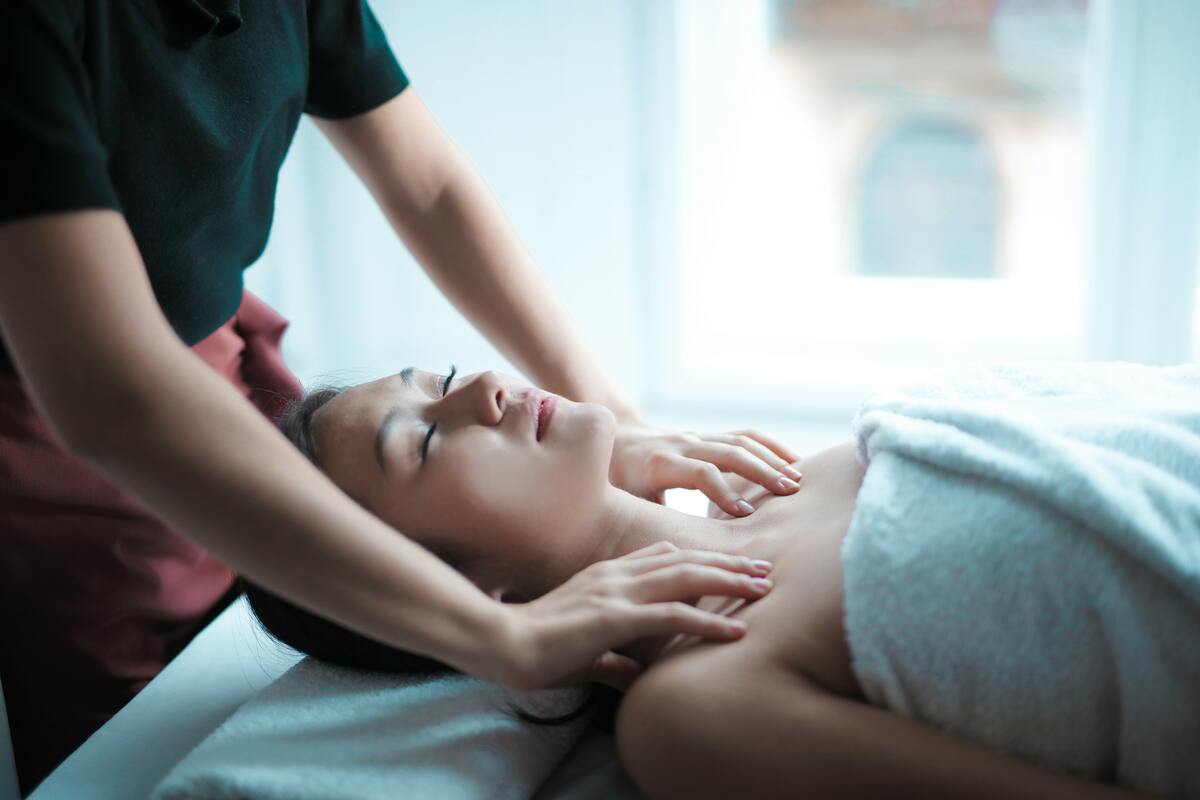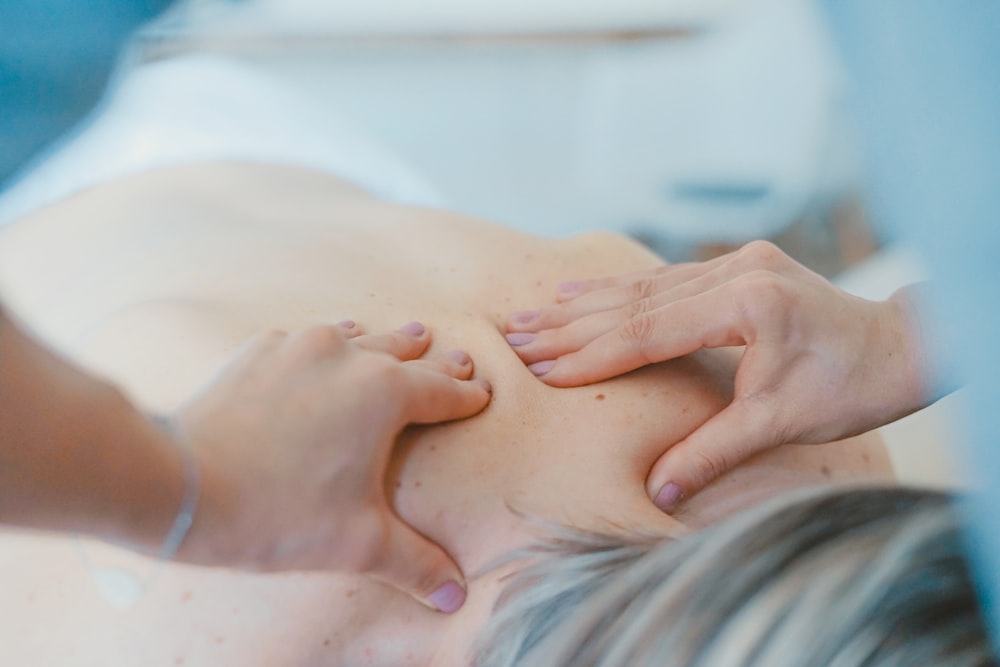
Have you seen tuina or tui-na massage listed on the menu of services at a local spa? The Chinese tuina massage is a form of therapeutic massage based on the ancient Chinese bodywork system. Its roots lie in oriental medical principles, which seek to improve the flow of qi (or energy) in your body’s meridians. Apart from addressing illness, discomfort and pain, the Chinese tuina massage could be a form of preventative care. Tuina belongs to the 5 main pillars of Traditional Chinese Medicine along with Chinese dietetics, acupuncture, herbal therapy, and movement therapies such as qi gong and tai chi. Practitioners of the Chinese tuina massage believe that when there are blockages and imbalances in your meridians, illness or pain can commence.
There are many health benefits of massage therapy, and different types of massage therapy provide somewhat different health benefits.
Tuina (pronounced twee-nah) literally means ‘pinch and pull’ to stimulate qi flow, and promote total body harmony. This massage is aptly named, because you will feel this pinch and pull during the massage therapy session. This treatment is somewhat similar to acupuncture since it targets pressure points on the body. However, it doesn’t use needles. Practitioners of the Chinese tuina massage rely on their fingers, hands, elbows, and the knees to apply pressure and stimulate pressure points. For this reason, tuina is also referred to as the ‘high art of physical touch.’ Find out how this massage therapy type works below, along with its numerous potential health benefits.

How Chinese Tuina Massage Works
The underlying philosophy of tuina hinges on the balance inside yourself and with your environment. Practitioners seek to create a harmony of yin and yang to eliminate blockages and other disturbances that manifest in the form of physical illness, emotional problems, and mental health issues.
Tuina relies on the same meridians and acupoints to balance qi (energy) and xue (blood) to strive for optimal health. If you receive this massage therapy, it can restore balance and reset qi stagnation. Expect the practitioner to use pressure and oscillating techniques with varying speeds and intensities, from a gentle treatment to a stronger deep-tissue massage.
What to Expect in a Tuina Massage Session
Gentle pressure equates to the yin, which is more passive and meditative. This typically targets muscles and joints to restore function. In contrast, yang is more physical, dynamic, and active to create more stimulating sensations for unblocking knots and using full body (nei gung) manipulation techniques to realign the whole body.
In general, various techniques are used to meet your specific needs. To enhance your tuina massage experience herbal remedies and natural healing salves are utilized as complementary treatments. Tuina massage relies on the same techniques that are used in acupressure, reflexology, myofascial release, osteopathy, and chiropractic mobilizations. The basic techniques of tuina are:
- Holding (na)
- Kneading (mo)
- Lifting (ti)
- Opposing (duan)
- Palpating (mo)
- Pressing (an)
- Pushing (tui)
- Rejoining (jie)
Benefits of Tuina
Tuina has a whole range of benefits from treating body pains, addressing specific illnesses, alleviating stress, enhancing sleep, and maintaining overall health and wellness. It is complementary to Western medicine, especially for injuries or conditions related to the musculoskeletal or nervous system. Best of all, it works well for people of all ages. Check out the specific benefits of getting tuina massage:
1. Promotes Healthy Blood Flow
The primary benefit of tuina is to promote good energy flow and stimulate blood circulation. Studies show that manipulating the BL56 acupoint using medium force for 10 minutes works wonders. Bear in mind that good circulation is essential for maintaining optimal health because it ensures oxygen and nutrient-rich blood flows through every organ. As a result, you could maintain a healthier heart, promote wound healing, and keep the brain sharp.

2. Boost Your Mood
Tuina focuses on holistic healing and this is highly beneficial for people suffering from depression and anxiety since this causes physical, emotional, and mental duress. A study conducted in 2015 shows that tuina massage could have a positive effect on depression and could reduce symptoms more than conventional therapies.
3. Effective for Musculoskeletal Problems
If you have pain in your joints, muscles, and bones, this could affect your mobility. A study conducted in 2017 shows tuina could be very effective for these musculoskeletal disorders, whether from structural misalignment, orthopedic problems, and sports injuries. It could alleviate pain faster compared to traditional medication and physical therapies. For example, it can treat the following issues:
- Address Low Back Strain: Sitting slouched over the computer and carrying heavy loads could result in lower back pain. Fortunately, tuina works exceptionally well in alleviating muscle strain in the lower part of your back. Studies also say that tuina could be very effective when combined with core exercises as it works to stabilize the back.
- Alleviate Neck Pain: In today’s modern world, more people suffer from “text neck” since frequently looking down on your phone, tablet, or laptop places the neck at an odd angle. It results in tightness and tension in the area. According to the Journal of Alternative and Complementary Medicine, tuina is a very affordable and potentially very effective solution for neck pain.
- Solution for Osteoarthritis Pain: Do you feel aches and pains due to osteoarthritis? Tuina massage could help as one study asserted that it could alleviate tension and improve pressure on the flexor and extensor muscles in patients with knee issues. Apart from relieving pain, there’s a significant improvement when it comes to stiffness and function.
- Manage Carpal Tunnel Symptoms: There’s an unprecedented rise in carpal tunnel syndrome or pain in the wrist area. The primary culprit for this is the frequent use of phones and gadgets. The weight and hand position exert undue pressure on the wrist and fingers. Similarly, wrong positions when typing could also aggravate pain in the area. Tuina massage could help alleviate pain in the area, especially when combined with other treatments like acupuncture and herbal medications.
4. Encourage Postpartum Lactation
Tuina could be very helpful if you want to breastfeed. Having your breasts manipulated with tuina techniques could increase your milk supply. Studies affirm that tuina massage could help new mothers produce greater quantities of milk in a shorter span of time.

5. Address Foot Issues From Diabetes
The foot has the poorest circulation because it is farthest from the heart and carries a heavy burden. For people with a normal constitution, this is not a problem. However, diabetics commonly have foot problems due to their disease. High sugar in the blood results in fatty deposits in blood vessels, resulting even in poorer flow in the lower extremities. One clinical study attested that tuina massage along with a Chinese herbal foot bath could be highly beneficial with an early-stage diabetic foot, with patients showing improvement.
6. Help Cancer Patients
Tuina massage could complement cancer treatment. It is a viable solution for patients who seek to manage symptoms from both the disease and traditional treatments like chemo or radiation therapy. According to the Journal of Pain and Symptom Management, tuina massage could greatly improve a cancer patient’s quality of life.
7. Treat Certain Disorders
Since tuina seeks to harmonize the meridians, it could help treat internal diseases like irritable bowel syndrome (IBS), premenstrual syndromes, digestive issues, reproductive issues, and respiratory problems.
Seek Professional Guidance Before Seeking Alternative Therapies
Although Chinese tuina massage could be very effective in treating a myriad of health ailments, it is vital to speak with your doctor if you use it to address any medical condition. Some doctors might give the okay for you to get tuina massage as a complementary treatment to conventional Western medicine.
This treatment is safe and well-tolerated by a wide range of people. However, note that it is not always a gentle massage, so you could feel discomfort when you’re pinched, pulled, and pressed on during the session. If you’re seeking a relaxing massage, this could not meet your needs especially if you’re particularly sensitive to pinching and pulling. Some people like the pressure, and others don’t.
Tuina massage might not be suitable for those who are prone to fractures, bruises, and vein inflammations. You should also avoid this therapy when you have an open wound. To assess if this massage is suitable for you as a form of therapy, speak to your doctor.
For more ideas on how to take preventative measures toward protecting your health, get hundreds of health-related DNA insights from CircleDNA.






